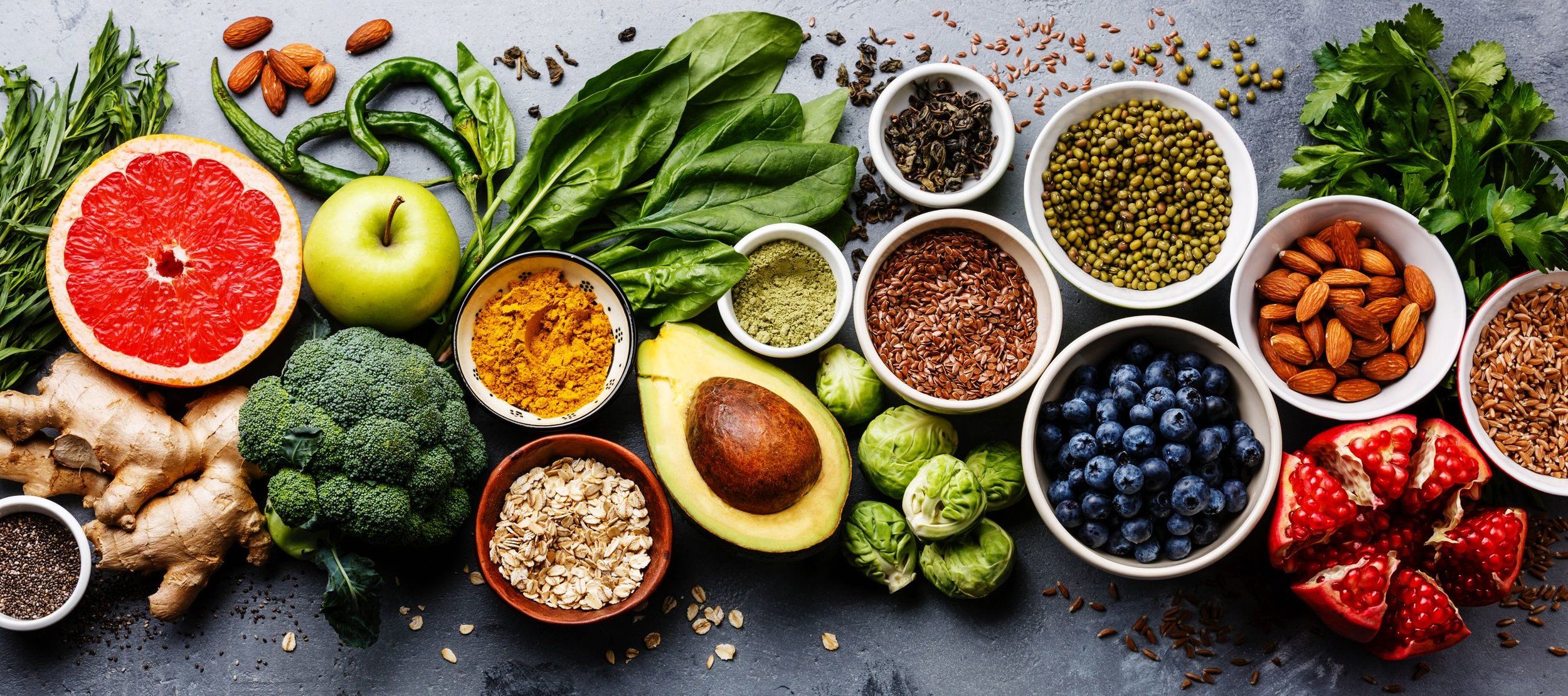Veganism demystified: Beginner's guide to plant-based living
Discover meal tips, label reading tricks, and join the vegan community for support.
The stereotype about vegans never ceasing to talk about their cruelty-free lifestyle often turns off many from considering it. Yet, behind this chatter lies a dedication to a morally conscious way of living. Contrary to popular portrayals in the media, not all vegans fit the stereotype of tree-hugging hippies who never shower. People adopt this lifestyle for varied reasons, and if you're reading this, you might have an interest too.
The recent surge of veganism is unmistakable. As of 2022, approximately 24% of the Indian population has adopted a vegan lifestyle and according to a recent survey by Statista, the worldwide vegan food market is projected to surpass a value of 22 billion U.S. dollars by 2025. It has indeed become a hot topic of numerous documentaries and endorsements from influential figures like Bill Clinton and Ariana Grande. Social media further propels its popularity, making it easier to share, explore, and adopt.
Stepping into the world of veganism can feel daunting. From dietary choices to clothing preferences, it requires a wide array of decisions. After all, why would anyone renounce the deliciousness of meat or the allure of leather? Especially in a country boasting tantalising dishes and captivating spices, the transition might seem overwhelming initially.
Are you planning to explore veganism but feeling a bit lost on where to begin? You're not alone—plenty of individuals share your curiosity about embracing a vegan lifestyle, and January being the Veganuary month, you’re good to go. To assist you, we've curated a beginner's guide to veganism this Veganuary, packed with invaluable tips and advice. Read along!

What is veganism?
Veganism isn't just an extension of vegetarianism; it's a conscious step further.
While vegetarians avoid only animal-derived foods like fish, eggs, and meat, vegans take it a step further. Transcending from a mere dietary choice, veganism is a philosophy centred on refraining from all animal-based foods like meat, dairy, eggs, honey, and even items that contain animal derivatives, such as certain beers and wines. Apart from these foods, they also relinquish products derived from animals or tested on them. This includes clothing made from fur, wool, leather, silk and other animal-derived materials.
The Vegan Society defines veganism as–“Veganism is a philosophy and way of living which seeks to exclude—as far as is possible and practicable—all forms of exploitation of, and cruelty to, animals for food, clothing or any other purpose.”
People embrace veganism for various reasons, ranging from ethical considerations that minimise animal exploitation to environmental consciousness, spiritual belief and health benefits. Feel free to take the time to introspect and decide why embracing veganism appeals to you, and craft rules that align with your beliefs and aspirations.
Without further ado, let’s get started with the tips and tricks.
Navigating the vegan transition
Approach this journey with an open mind, setting aside any preconceived notions. Dismiss the misconceptions about veganism being too costly, lacking in nutrients, or too time-intensive to adopt. A positive mindset can make embracing plant-based choices an enriching, delightful, and fulfilling experience.
Think of it as food that reciprocates the love we put into it. You'll find more budget-friendly shopping options, explore new delightful flavours, and gradually find meal preparation easier.
What matters most is finding a pace that suits you. That being said, there are 5 recognised levels of veganism-
Level 1 Vegan
These individuals adopt a vegan diet primarily for health reasons. They mostly avoid animal-derived foods but might occasionally consume products like honey or milk chocolate.
Level 2 Vegan
These vegans are health-conscious and driven by animal welfare. They are more committed to ethical practices but may occasionally make exceptions, such as purchasing non-vegan accessories or clothing.
Level 3 Vegan
Level 3 vegans have embraced the lifestyle and overcome the initial adjustments to live comfortably as vegans. They actively advocate for animal rights, exhibiting a deeper awareness of animal cruelty and often participate in protests.
Level 4 Vegan
Committed to a strict dietary regimen, Level 4 vegans consume an abundance of fruits, vegetables, and nuts, maintaining a more disciplined approach to their eating habits.
Level 5 Vegan
Recognised as highly dedicated ‘extreme vegans’, Level 5 vegans extend their commitment beyond diet. They avoid all accessories made from animal products, refuse makeup tested on animals, and strictly abstain from wearing clothing made of animal furs, skins, or byproducts.
Make your meals simple but diverse
While the allure of mock meats, vegan cheese, and alternative kinds of milk might be strong, these products can be pricey. If a complete switch to veganism feels overwhelming, start your vegan journey with simpler, more accessible foods.
Focus on whole foods rich in essential nutrients like grains, vegetables, legumes, starches, fruits, nuts, tofu, soy or almond milk, and seeds as the cornerstone of your meals. You can also explore a myriad of delectable options—soups, stews, chilli, and curries—crafted solely from wholesome produce. Foods like plant-based pasta and quinoa also serve as stellar starters for your vegan journey. Not only are these choices healthier, but they also won't burn a hole in your pocket.
Enhance them with an abundance of flavourful herbs, vibrant vegetables, and delicious sauces! Then, gradually eliminate fish from your meals, and continue making adjustments at your own comfortable pace.
This gradual introduction helps acquaint you with diverse plant-based foods and cultivates ease in their preparation. Explore appealing vegan recipes that pique your interest.
It’s all about giving your favourite meals a vegan makeover. But remember, you're not confined to forcing down tofu and broccoli if they're not to your liking. Be adventurous and explore new vegetarian food weekly.
A delicious vegan sample menu
Numerous Indian dishes can easily be transformed into vegan delights by steering clear of ghee and opting for straightforward substitutes. However, streamlining the process and broadening your culinary horizons can be facilitated with a well-thought-out meal plan. Following are some breakfast, lunch, snacks and dinner options:
Breakfast
- Vegan breakfast sandwich-tofu, veggies and dressing of your choice
- Overnight oats-fruit, fortified plant milk, chia seeds, and nuts
- Toast with banana and nut butter
- Dosa with vegan coconut chutney
- Wholewheat parantha
- Chickpea pancakes (besan ka cheela)
- Smoothie bowl topped with fruits, nuts and seeds
Lunch
- Dal rice and curry
- Wholewheat roti with curry
- Appam with vegetable stew
- Vegetable Biriyani
- Oats upma
- Pesto pasta with vegetables
Snacks
- Hummus and veggies
- Roasted chickpeas/nuts/fox nuts
- Nuts and fruit salad topped with peanut butter and dates
- Vegan vegetable cutlets made from corn, potato, onion, cabbage, carrot and beetroot
- Chia pudding
- Sprouts salad
Dinner
- Roasted vegetables with quinoa and dressing of your choice
- Baked sweet potatoes with bean salad
- Stir-fried tofu with vegetables
- Lentil or vegetable soup with whole grain toast and hummus
- Red lentil and spinach dal paired with rice
- Tofu scramble
If you find yourself uncertain or overwhelmed when it comes to achieving well-balanced nutrition, it may be beneficial to consult with a healthcare professional. They can assist you in creating personalised meal plans tailored to your specific needs. Additionally, considering periodic blood tests every 6-12 months can be valuable. These tests can unveil improvements in certain areas and indicate potential nutrient deficiencies in others. Though not obligatory, they can address any specific concerns you may have, whether it involves navigating menus or constructing a comprehensive vegan plate that fulfils your nutritional requirements.
Conduct adequate research
Knowledge is key to a successful transition to veganism. While embracing a vegan lifestyle can offer excellent health benefits, it's crucial to make informed choices. Before altering your diet, delve into the intricacies to identify plant-based sources rich in protein, iron, calcium, and vitamin B-12.
Here are some commonly available sources for your reference-
Protein
- Lentils, chickpeas, black beans, and peas
- Tofu and Tempeh
- Seeds like hemp seeds, chia seeds, pumpkin seeds, and flaxseeds
- Nuts like almonds, peanuts, and cashews
Iron
- Dark leafy greens like spinach, kale, swiss chard, and broccoli
- Dried fruits like raisins, apricots, and prunes
- Broccoli, cabbage and brussels sprouts
- Dates
- Figs
- Lentils, soybeans and kidney beans
Calcium
- Fortified plant milk like soy, almond, oat, or rice milk
- Beans like white beans, black beans, and chickpeas
- Chia seeds, almonds, sesame seeds and poppy seeds
Vitamin B-12
- Certain plant-based milk, cereals, and nutritional yeast
- B-12 supplements
- Fortified plant-based meats
Remember, for vitamin B-12 especially, it's essential to monitor levels regularly and consult a healthcare professional for supplementation guidance.
Always read labels before purchasing
Mastering the art of label reading becomes essential as you embark on your vegan journey.
While some products now prominently display ‘suitable for vegans’ labels, many items still lack these markings.
Keep an eye out for substances like casein, rennet, collagen, whey, lactose, shellac, gelatin, carmine, anchovies, lactic acid, and beeswax. Some common products that might hide animal-derived ingredients within their ingredient lists are-
- biscuits
- crisps
- beer and wine
- makeup
- candies
- baked goods
- barbecue sauces
- household cleaning items
So, prepare to scrutinise labels closely and, at times, break out the magnifying glass.
Network and join communities
Transitioning to veganism can feel isolating if you don't have a support network.
Platforms like Facebook and Twitter host groups and accounts solely dedicated to all things vegan. These communities serve as hubs where individuals share recipes, offer valuable tips, and extend advice, especially for those new to veganism. Embrace these spaces to share your own experiences and learn from others.
You can follow these YouTube channels for increased motivation and vegan meal plans-
You can also read these useful vegan books for help-
- The Vegan Starter Kit by Neal Barnard, MD
- Forks Over Knives edited by Gene Stone
- How to Go Vegan by Veganuary
- Going Vegan for Beginners by Pamela Fergusson, RD, PhD
- Main Street Vegan by Victoria Moran
Alternatively, you can also follow these vegan communities on Facebook-
The Bottom Line
Embarking on a vegan lifestyle is a transformative journey that demands patience, an open mind, and a thirst for knowledge. Through self-education, gradual changes, and finding a supportive community, you can embrace a way of life that resonates with your values, promoting a healthier, more compassionate world. Remember, each small step you take contributes to a more mindful and sustainable existence.












